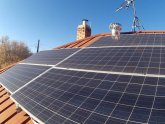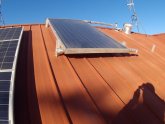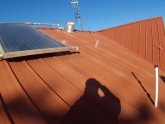For my future batteries, I will be going with the Tesla S batteries from salvaged vehicles.
These go for $1300ish off of ebay and will require 2 for 48v
Also required will be the battery controller and I am aiming for the Jack Rickard controller which does cost $2500 for the controller alone - BUT there is REAL value and feature sets in the product:
Watch his video on it first - run the video speed at least 1.25 or 1.5
Here are the reasons why I want his controller:
1) I want a 5+ day depth of battery bank -eventually - That is at least 5 days of NO solar input. I use abt 15kwh per day, that means I need 75kwhr deep battery bank. I can't get there immediately, but I can start with a 10kwhr pair of Tesla S modules (again $2500 for 2) and add 2 more modules over time, increasing my bank depth by 10kwh per set as I get $2500. The controller will display 40 battery modules, but supposedly can control 62 modules
Cost to get started: $2500 for Tesla S batteries and $2500 for battery controller, 10kwh capacity initially - with ability to grow
COMPARE: I currently have 12 2volt USBattery L16 size Lead Acid batteries, 1100amp-hr each. Cost was $5000.
10kwh usable capacity due to only can use 50% DOD. BUT I need another set at $5000 to make it 48volts: total cost would be $10,000.
But wait.....there's more: I need to get all the same Lead Acid batteries at the same time - which means I would have to replace my current set as well - can't just add another new set of 12 batteries to an old set of batteries. Argh!
2) The EVTV controller
http://store.evtv.me/proddetail.php?prod=esp32bms
interfaces WITH the onboard Tesla BMS. It does NOT do the BMS function itself, it reuses the existing BMS. That Tesla BMS is the secret sauce on running these batteries. Tesla engineers know their batteries and how to properly manage them - they manage 16 modules in each car.
The controller ONLY works with the Tesla Model S. They are working on another product to control Model 3 batteries, but not there yet.
2a) Tesla battery fires and why the Tesla BMS might be the best BMS - watch between (HH:MM) 1:12 to 1:24 and then 1:29 to 1:35
750 gasoline car fires PER DAY
a dozen or so Tesla vehicle fires ever
BMS by Tesla is excellent
3) This is a house capable system, not a portable unit. Serious project. I don't want Netmetering, I want my own battery store at my point of usage. I am thinking bigger. Rickard calls this the "Selfish Solar" model.
I want what Congressman Thomas Massie has built using this controller and Tesla batteries. Massie also coded the display module using a Raspberry Pi, that I believe he has licensed to Jack Rickard, which ships with each controller.
- read some of the comments on that vid
4) I was ahead of the pack back in 2000 with my system and I went ahead and did it. What I didn't know, I found a class and attended - cost $1500 for class and lodging. Then I built it. Today we can search and find GOOD verifiable training on youtube - it does take some time, but better then before youtube was around.
So I want to take my system higher and bigger than it was before. That means more battery depth, more panels and newer inverters and charge controllers. My wiring works just fine and will handle the upgrades,
I planned for a bigger system then initially was running. It just has taken 20 years to where I can really build it right
dougbert






